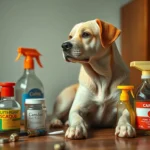
Understanding the intricacies of dog anatomy is crucial for any pet owner. One common question that arises is, do dogs have lips? This seemingly simple inquiry opens up a broader discussion about the anatomy of dogs, their health care, and how we as pet owners can ensure their well-being.
In this article, we will delve into the anatomy of a dog’s mouth, the importance of oral health, regular veterinary care, and much more. By the end, you will have a comprehensive understanding of how to maintain your dog’s health, starting with the question of their lips.
Understanding Dog Anatomy
Basic Structure of a Dog’s Mouth
A dog’s mouth consists of several key components: lips, gums, tongue, and teeth. While we often think of our own mouths when discussing anatomy, dog mouths are distinct in both structure and function.
- Lips: Dogs have a set of fleshy structures at the edges of their mouths, which serve various purposes.
- Gums: The gums support the teeth and protect the underlying structures.
- Tongue: The tongue plays a crucial role in tasting, eating, and regulating body temperature.
- Teeth: Dogs possess sharp teeth designed for biting and tearing food.
Compared to human mouths, dog mouths are generally wider and have a different arrangement of teeth. This difference allows dogs to consume a variety of food types, primarily meat and bones, which is essential for their health.
The Role of Lips in Dogs
Dogs’ lips serve several important functions. They play a crucial role in:
- Eating and Drinking: Lips help to hold food in place while dogs chew and drink water.
- Communication: Dogs express emotions through their facial features, including their lips, which can signal confidence, submission, or even aggression.
Understanding these functions can help us gauge our dogs’ health and behavior more effectively.
Do Dogs Have Lips?
Definition of Lips
To address the question of whether dogs have lips, we first need to define what lips are. In mammals, lips are the soft, fleshy structures that surround the mouth and help in the manipulation of food.
Anatomical Comparison
When we compare dog lips to human lips, we can observe several differences. While human lips are more versatile and used for speech and a wider range of facial expressions, dog lips are primarily functional. They are less mobile and serve more to contain food and communicate basic emotions.
Additionally, different dog breeds exhibit variations in lip structure. For instance, brachycephalic breeds like Bulldogs have shorter, thicker lips, while Greyhounds have longer, thinner lips. These variations can affect how each breed eats and drinks, as well as how they interact with their environment.
Common Misunderstandings
Many people mistakenly believe that dogs have “lips” similar to humans. While they do have lip-like structures, these are not as developed or versatile as human lips. They primarily function to aid in eating and basic communication.
The Importance of Oral Health in Dogs
Common Dental Issues in Dogs
Just like humans, dogs can suffer from a range of dental issues. The most prevalent include:
- Periodontal Disease: This is the most common dental condition in dogs, caused by plaque buildup that leads to gum inflammation.
- Tooth Decay: While less common than in humans, dogs can still experience cavities, particularly if they are fed a high-sugar diet or have poor oral hygiene.
- Gum Disease: Infections and inflammation of the gums can lead to pain and tooth loss if not treated promptly.
Signs of Oral Health Problems
As a responsible dog owner, it’s essential to recognize the signs of oral health issues. Common symptoms include:
- Bad Breath: This can indicate underlying dental problems.
- Difficulty Eating: If your dog is hesitant to chew or seems to be in pain while eating, it may be time for a vet visit.
- Excessive Drooling: This could signal dental issues or other health concerns.
- Gum Swelling or Bleeding: Visible signs of inflammation should never be ignored.
Preventive Care for Dog Oral Health
Preventive care is critical for maintaining your dog’s oral health. Here are some key strategies:
- Regular Dental Check-ups: Schedule veterinary appointments to assess your dog’s oral health and perform cleanings as needed.
- Dental Treats and Toys: Chew toys and dental treats can reduce plaque and tartar buildup.
- Brushing: While it may take time to get your dog accustomed to it, regular brushing can significantly improve oral health.
Overall Health Care for Dogs
Regular Veterinary Check-ups
Annual veterinary exams are crucial for maintaining your dog’s health. These visits allow for early detection of potential health issues, vaccinations, and overall assessments of your dog’s condition.
Nutrition and Diet
A balanced diet is vital for your dog’s overall health, including oral health. Ensure that you choose high-quality dog food rich in essential nutrients. A proper diet can help prevent obesity, dental issues, and various chronic conditions.
Exercise and Mental Stimulation
Physical activity is essential for a dog’s health. Regular walks, playtime, and engaging activities prevent obesity and promote physical wellness. Additionally, mental stimulation through toys, puzzles, and training exercises can help keep your dog mentally sharp and well-behaved.
Common Dog Health Issues
Skin Conditions
Dogs can experience various skin issues, including:
- Allergies: Many dogs suffer from allergies to food, pollen, or flea bites, leading to itching and discomfort.
- Dermatitis: This condition can be caused by irritants and can lead to red, inflamed skin.
- Infections: Bacterial or fungal infections can also affect a dog’s skin, requiring prompt veterinary intervention.
Digestive Problems
Digestive health is another critical aspect of overall well-being. Common issues include:
- Vomiting: This can be caused by numerous factors, including dietary indiscretion or illness.
- Diarrhea: Frequent loose stools can indicate dietary issues, infections, or parasites.
- Constipation: This may result from dehydration or a lack of fiber in the diet.
Joint and Mobility Issues
As dogs age, they may develop joint problems such as arthritis, which can significantly affect their mobility. Keeping your dog active, maintaining a healthy weight, and providing appropriate supplements can help manage these issues.
Understanding Canine Behavior and Communication
The Role of Mouth and Lips in Communication
Dogs communicate a lot through their mouths and facial expressions. Their lips, along with their teeth and eyes, play a significant role in conveying emotions. For example, a dog that shows its teeth while growling is exhibiting aggression, while a dog with relaxed lips may be showing submission or happiness.
Reading Canine Body Language
Understanding canine body language is essential for any dog owner. Observing how your dog holds its mouth, ears, and tail can provide insight into its emotional state and overall health.
- Relaxed Mouth and Ears: Indicates calmness and contentment.
- Tense Mouth and Ears Back: May suggest fear or anxiety.
- Open Mouth and Panting: Typically a sign of stress or overheating.
Tips for Dog Owners
Daily Care Routines
Establishing a daily care routine can help ensure your dog’s well-being. Key components include:
- Feeding: Provide balanced meals at regular intervals.
- Exercise: Aim for daily walks and playtime to keep your dog fit.
- Grooming: Regular brushing and grooming help maintain a healthy coat and skin.
Emergency Care and First Aid
Being prepared for emergencies is crucial. Familiarize yourself with basic first aid techniques, such as how to manage bleeding or perform CPR. Having a pet first aid kit on hand can also be beneficial.
When to Seek Veterinary Help
Knowing when to seek veterinary help is essential. Signs that require immediate attention include:
- Severe Vomiting or Diarrhea: Especially if accompanied by lethargy or dehydration.
- Difficulty Breathing: This is a serious condition that needs urgent care.
- Injuries: Any significant injury or trauma should be evaluated by a veterinarian.
Conclusion
Understanding the anatomy of your dog, including the question of do dogs have lips, is vital for effective health care. By being proactive in your dog’s health and recognizing signs of potential issues, you can ensure they lead a happy and healthy life. Regular check-ups, proper nutrition, and attention to oral health are all essential components of your dog’s care.
Being a responsible dog owner involves continuous learning and engagement with your pet’s needs. By investing time in understanding their anatomy and health care, you can foster a deeper bond and ensure their well-being for years to come.









